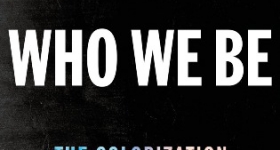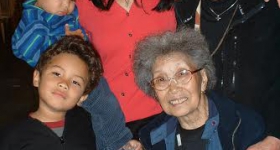One autumn afternoon, Lisa Kwon and her elderly father Yui Woon find themselves among crowds of visitors at the Museum of Chinese in America in New York (MOCA). It is Thursday, a day when the museum is free to the public.
The museum, which recently reopened after an $8.1 million transformation, charts Chinese presence in the United States — from its earliest days in the 1700s, to tribulations following the 1882 Chinese Exclusion Act, to present-day successes as embodied by Jerry Yang of Yahoo!, Steve Chen of YouTube and Jennifer 8. Lee of The New York Times.
The museum’s exhibition “resonates with me and makes me realize that Chinese have roots that go back and are a strong part of American history,” says Kwon, 42, an attorney born in Hong Kong and raised in Brooklyn, NY. “Yet we know so little about [these roots].”
A century ago, Kwon’s great-grandfather sojourned in San Francisco before moving back to China. Two generations later, his descendants returned to the United States.
“I am an immigrant, too,” Yui Woon, 73, says proudly in Cantonese with a smile.
Backed by powerful institutions, museums in general — and ethnic museums in particular — help validate otherwise-overlooked collective histories, such as the one Kwon and her father identify with.
“Museums are important venues in which a society can define itself and present itself publicly,” Steven Dubin writes in his book, Displays of Power: Controversy in the American Museum from the Enola Gay to Sensation, which analyzes exhibits that have drawn public ire. “Museums solidify culture, endow it with tangibility, in a way few other things do.”
But museums and their exhibits are subject to controversy. Quite often, history and its interpretation are the focus of intense debate.
“People butt heads over representations and portrayals,” Dubin writes. “They struggle for their interpretation of some historical moment to win out. They crusade to control what others know and feel about certain issues.”
The Smithsonian Institution, for example, canceled a 1995 exhibit about the Hiroshima bombing when US veterans complained that the exhibit portrayed them as aggressors and the Japanese as victims.
Museum officials struggle simultaneously to address competing needs and interests, to stay relevant and timely, to maintain a curatorial perspective and to minimize embroilment in controversy. For museums serving traditionally underrepresented communities, the stakes are even higher.
“There’s a sense of ownership that can be powerful,” Dubin says in an interview. “But it’s a special challenge. People can get nasty, and museums closely attached to a community are in danger of alienating funders. To tackle a controversial topic, [museums] need to [approach] it more delicately, with a lot of preparatory work.”
Despite its outreach efforts, the Oakland Museum of California encountered trouble in 2004 over an exhibit about California and the Vietnam War. The exhibit’s 500 historical artifacts, photographs and documents were interwoven with film clips, music and oral histories — many from veterans and refugees. The material was arranged in 11 chronological sections covering topics from pre-war grass-roots activism in California to Hollywood portrayals of the conflict.
The exhibit encountered criticisms that it failed to incorporate the Southeast Asian perspective and that officials did not seriously consider community suggestions. A further outcry arose when the only Vietnamese American on the exhibit’s staff was dismissed days after protesting that the exhibit was not sufficiently inclusive. In response, the museum created a temporary Southeast Asian advisory board and, at the board’s suggestion, added material about Vietnam and Southeast Asian history and included a wider range of stories in the exhibit.
The museum also renamed the exhibit: The original title was Next Stop Vietnam: California and the Nation Transformed, misleadingly suggesting a focus on the war itself rather than on concurrent events in California. The exhibit was re-dubbed: What’s Going On? — California and the Vietnam Era.
In addition, another Vietnamese American staff member was hired — only to resign within months out of protest that changes to the exhibit were only cosmetic.
Bich Ngoc Nguyen, who served on the project’s advisory committee, recalls her frustration during that time. The committee had met several times with museum officials and offered suggestions, but only when staff members left did they realize that their input would not necessarily be implemented or even taken seriously. Indeed, Nguyen says, the modified exhibit still did not seem “authentic.”
“It was a huge education for us,” says Indra Mungal, a community programs manager at the Oakland Museum. She describes how museum staff spent hundreds of hours reading emails and talking to people by phone. “There were still a lot of wounds around the stories.”
The museum has tasked three long-term advisory committees — Asian American, African American and Latino — with connecting curators to community members, finding artifacts and raising issues, Mungal says. In addition, the museum provides programs that endeavor to provide content that space- and budget-limited exhibits cannot.
In an effort to include as many voices as possible, the Wing Luke Asian Museum in Seattle takes a community approach to nearly all exhibits. Committees staffed mostly by community members decide on storylines, exhibit designs and related materials.
Although the museum was originally dedicated to Chinese Americans in the Pacific Northwest, the board decided two decades ago, to expand the museum’s scope to reflect demographic changes in the surrounding community. In 2008, the museum welcomed 50,000 visitors when it reopened in its larger, 7,200-square-foot space.
“We facilitate a process where the community develops stronger ownership for the stories being told,” says Beth Takekawa, the museum’s executive director.
The Asian adoptee exhibit in 1995 was particularly complex to facilitate. Its committee included first-wave adoptees who are now adults, adoptive parents with younger children and adoption agencies.
“There are tense moments, but you have to allow all opinions expressed. It’s all part of the story. You can’t only present one thing,” Takekawa says. “We’re [presenting] oral history based on [each] person’s point of view and not a sociological generality.”
In Los Angeles, the Chinese American Museum tries to stay relevant by planning shows only a year in advance, in contrast to the multiyear efforts at large institutions.
“We have to be able to act quickly to capture the issue and offer the historical point of view,” says Pauline Wong, executive director of the museum, which opened at the end of 2003. “We want to stay flexible and close to the community.”
But defining the community is difficult when the “who” and the “where” are constantly evolving.
The Chinese American Museum is located in the last remaining building in the original Los Angeles Chinatown, much of which was razed to make way for a freeway and Union Station. The brick building, formerly an unofficial town hall that housed Chinese businesses, community associations, schools and apartments, serves about 20,000 visitors annually.
“We are in historic Chinatown. This is our home- this [is] where the Chinese gate is,” Wong says. “But there are new Chinese communities in the San Gabriel Valley and further [beyond]. It’s our biggest challenge to show that this is a place for them, too, even though newer immigrants may not know or feel connected to this history.”
To that end, the museum held focus groups among Mandarin speakers living east of downtown, and found many interested in aspects of Chinese culture such as tea and calligraphy. “We have to find a Chinese American, a Los Angeles spin to these topics,” Wong says.
The museum’s current exhibit, Hollywood Chinese, which runs through May 30, reveals this community’s changing role in the film industry. Much material is drawn from the collection of Arthur Dong, a San Francisco native whose 2007 documentary of the same name was critically acclaimed.
The exhibit fills two galleries of the museum and addresses geopolitics in movies, major characters such as Fu Manchu and Charlie Chan, and films such as Flower Drum Song.
It also includes stills from the first Chinese American movie, a 1916 silent film shot in San Francisco, and a collection of lurid movie posters (“Gold lust was the lure … a gold-skinned beauty was the trap!” screams the tagline for Rider on a Dead Horse). Display cases contain a pair of Fu Manchu “Oriental specs,” a Fu Manchu board game and other memorabilia.
On the first floor, a permanent exhibit features a re-creation of a general store and an herbal medicine counter. Information is presented in Spanish, English and Chinese. The museum is located near bustling Olvera Street, a popular historical attraction of Mexican shops and restaurants, and visitors often arrive by accident.
Visitors can pull out drawers in the general store to see, side by side, Eastern herbal treatments in contrast to Western medicine: a root for treating aches and pains versus a tube of Bengay. It also displays the dragonhead used in parades.
The Museum of Chinese in America in New York — designed by architect Maya Lin — also features a re-created general store and dragonhead, reflecting the shared history and culture of Chinese Americans across the country.
From its 1980 inception, MOCA reached into the community seeking the oral histories of garment, laundry and restaurant workers. Museum staff taught schoolchildren interview techniques “empowering them to ask questions at the dinner table,” says Cynthia Lee, MOCA’s curator and director of exhibitions.
But of the workers interviewed, Lee says, “How many came through the doors for the exhibitions? Not as many we wanted.” Part of the problem was logistical: In the past, exhibits were on the second floor with no elevator, making them hard to find.
MOCA also reassessed its target audiences. This meant “looking at who tends to think about museum-going, what are they looking for and how are they introduced,” Lee says. One resulting strategy works through family ties: “We work with kids in the neighborhood, and hope the kids tell their families.”
All museums must contend with changing demographics if they hope to attract and retain visitors. Figures suggest that today’s museums are struggling to do so. The median attendance for all museums is 26,500, according to the American Association of Museums triennial survey. Art museums fare better with a median attendance of 44,878, while specialized museums — including ethnic institutions — logged in at 22,000.
In addition, museums oriented to ethnicity and identity may struggle to attract an audience that doesn’t habitually visit museums (only 9 percent of core museum visitors are minorities, according to a study commissioned by the American Association of Museums). Positive change may hinge on the influence of daughters like Lisa Kwon, whose father shopped daily in New York’s Chinatown but would have never visited the museum if not for Kwon’s insistence that afternoon.
Many museums have reached out with children’s programs to draw in otherwise-hesitant parents, while others are broadening their offerings to engage wider audiences. In the last decade, the Oakland Museum has twice renamed its “Chinese New Year Celebration” — first as “Lunar New Year Celebration” and then as “Lunar New Year Celebration and other Asian Traditions” — to express greater inclusiveness in a program that now features performances by Thai, Cambodian and other cultural groups.
“The [San Francisco] Bay Area has so many Asian cultures,” says Snowy Tung, family programs coordinator for the Oakland Museum. “We want to everyone to hear the voices and know the differences.”
Vanessa Hua is a writer based in Southern California. This is her first article for Hyphen.









Comments